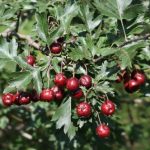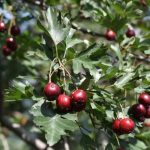|
Crataegus songarica K. Koch, Verh. Vereins. Beförd. Gartenbaues Königl. Preuss. Staaten 1(2): 287 1853. ;
. Iran to Xinjiang and W. Himalaya: Afghanistan, Iran, Kazakhstan, Kirgizstan, Pakistan, Tadzhikistan, Uzbekistan, West Himalaya, Xinjiang as per POWO; . Common name: Asian Hawthorn • Hindi: Ban sengli, Ban sanjli, Pangyar .
Crataegus songarica is an Asian species of hawthorn with black fruit that is sometimes used medicinally. It is closely related to Crataegus ambigua,[1] a species that has red fruit. Rosaceae Fortnight- Crataegus songarica from Himachal-GSG19/Sept 2015 : 1 post by 1 author.
Crataegus songarica. The Indian hawthorn, photographed in Pangi valley. .
. References: |



